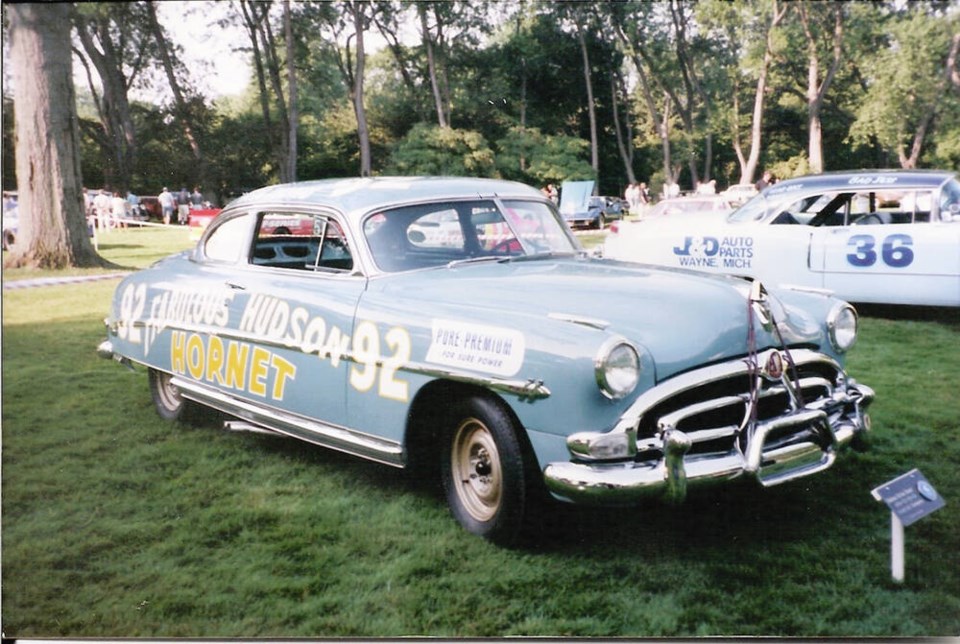Hudson was a proud name in North American automobiles for almost 50 years. And while it had an illustrious history, it’s ironic that it had to wait until the end of the last “real” Hudsons for its star to shine the brightest.
Although the Hudson name has been gone from the automotive landscape since 1957, it is still remembered fondly by many former owners. For most of its life it was the product of the Hudson Motor Car Co., formed in 1909 by four ex-Olds Motor Works employees.
The most famous of these was Roy D. Chapin who had driven a Curved Dash Olds from Detroit to New York in 1901, and been a principle in two other car companies Thomas-Detroit and Chalmers-Detroit.
Their new company received $90,000 in start-up funding from Detroit department store magnate Joseph L. Hudson so the car was named after him. Chapin was Hudson’s president until 1922 and again in the 1930s after holding significant public offices that included President Hoover’s Secretary of Commerce.
Hudson production started in July, 1909 in the short-lived Aerocar plant in Detroit. It soon built its own huge factory and by July 1910 more than 4,000 Hudsons had been sold, a first-year industry record.
Hudson prospered, spinning off other nameplates including Essex that pioneered the low priced closed car, and the high performance 1930s Terraplane. Peak production was 300,000-plus in 1929 and the company survived the Depression.
Hudsons were also assembled in sa国际传媒 by Canadian Top and Body Co. in Tilbury, Ontario, from 1932 until the Second World War production shutdown, and after the war until 1954.
Powerful six and eight cylinder engines made Hudsons outstanding performers. When production stopped in 1942 for the Second World War, Hudson held 120 American Automobile Association (AAA) stock car records, most by the great English record driver John Cobb.
After the war, Hudson quickly returned to production, building its first post-war vehicle on Aug. 30, 1945. Like others, it produced revised pre-war designs while preparing its new 1948 model, beating the Big Three, (General Motors, Ford and Chrysler), except Cadillac and Oldsmobile, by a year.
The low, wide 1948 Hudson featured “Step-Down” design” accomplished by lowering the floor pan. It had unit construction and Hudson claimed the lowest centre of gravity and best handling of any American car.
Mechanix Illustrated’s Tom McCahill (2/50) reported the Hudson was just 1,534 mm (60-3/8 in.) high with 1,626 mm (64 in.) wide seats, emphasized by photographing the seat cushion standing on end beside the car. He called the “worm scraper” Hudson a little short on ground clearance, but concluded it was “a great car.”
Hudsons were powered by either a 4.3 litre inline six or a 4.2 litre straight-eight, both with side valves. Performance was good, but not outstanding.
In 1951, they added outstanding performance when Hudson introduced the Hornet with the chrome alloy block six enlarged to 5.0 litres (308 cu in.). It produced 145 horsepower, up from the smaller six’s 121, and although the Hornet was really just a slightly revised Commodore, the performance transformed it.
The high power and low centre of gravity quickly made Hornet a name to be reckoned with in National Association for Stock Car Auto Racing (NASCAR) and AAA races.
Recognizing the great publicity value of winning races, Hudson made special “export,” or “severe usage” (read racing) high performance engine and chassis components available, most notably “Twin-H Power” dual carburetors. This and other modifications gave the Hornet over 200 horsepower.
Hudsons were the star of the racing circuits from 1951 to 1954, winning NASCAR championships in 1951, ‘52 and ‘53 and AAA stock car titles in 1952, ’53 and ’54. Overall, it won a total of 131 AAA, NASCAR and other races from 1951 to ‘54.
They were spirited in stock trim too. Road & Track (7/52) reported a top speed average of 150 km/h (92.9 mph), with a one-way run of 158 (97.8). Acceleration was good for that era at zero to 97 km/h (60 mph) in 14.5 seconds.
Despite its racing success, Hudson sales gradually declined from 131,915 1951 models to 66,143 1953s. The old stock car adage “Win on Sunday — Sell on Monday” was no longer working for Hudson, probably because buyers smelled failure and didn’t want to be left with an “orphan.”
In a defensive move Hudson and Nash Motors amalgamated to form American Motors Corp. in 1954. That would be the last year for “real” Hudsons. After that they were largely badge engineered Ramblers and Nashes until the Hudson nameplate disappeared in 1957.
Although Hudson won many awards over the years, the Hornet was the most colourful chapter in its illustrious history. It made a fitting swan song for a fine old automobile company.



